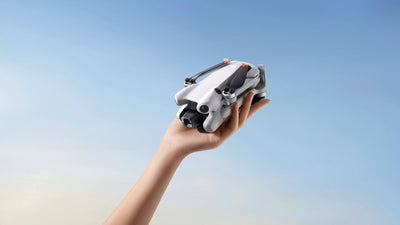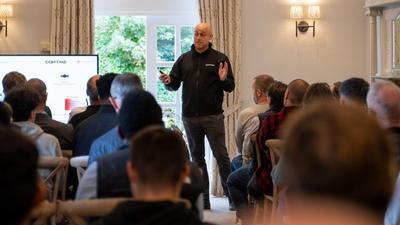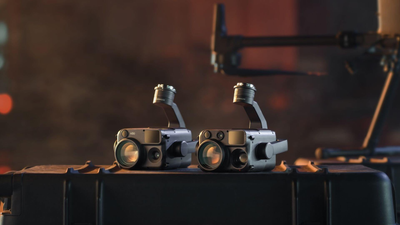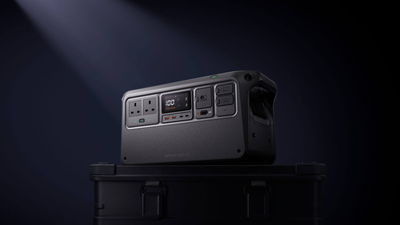What Are No Fly Zones For Drones In The UK? A Guide For Hobbyists And Professionals
- by Stefan Gandhi
Flying a drone is one of the most rewarding ways to capture the world from a unique perspective. From sweeping coastal landscapes to intricate architectural details, drones unlock creative and commercial possibilities that were once the preserve of helicopters and film crews. However, this freedom comes with clear boundaries. In the UK, drone operators are bound by strict airspace regulations, and among the most important of these are No Fly Zones. Understanding them is not just a legal necessity; it is essential for safety, compliance and responsible flying.
This guide is designed for both hobbyists capturing aerial shots for fun and professional pilots on commercial assignments, offering a go-to resource for navigating restricted airspace in the UK.
What No Fly Zones Mean
A No Fly Zone is an area of airspace where drone operations are prohibited or strictly controlled. These areas are put in place to protect sensitive locations, ensure public safety and avoid interference with manned aircraft. They are not arbitrary. Each restriction exists for a specific reason, such as the proximity to airports, national security concerns, wildlife conservation or public events.
In the UK, No Fly Zones often include a buffer zone extending several kilometres around certain facilities. Flying in these zones without explicit permission can result in fines, prosecution or even the seizure of your equipment.
Common Types of No Fly Zones in the UK
Airports and Airfields
The most widely recognised No Fly Zones are those surrounding airports. Drone flights are banned within a designated radius to avoid conflicts with aircraft during take-off and landing. These zones are strictly monitored.
Military Bases
Flying over or near Ministry of Defence sites is prohibited for security reasons. These areas are off-limits regardless of the altitude.
Prisons and Detention Facilities
Drones have been used in attempts to deliver contraband, which has led to strict restrictions over correctional facilities.
Nature Reserves and Wildlife Protection Areas
Certain areas are protected to prevent disturbance to wildlife. These restrictions often coincide with breeding or migration seasons.
Event-Specific Restrictions
Major events such as state visits, air shows and sporting fixtures can trigger temporary flight restrictions. These are announced in advance and last only for the duration of the event.
Who Regulates No Fly Zones in the UK
The UK Civil Aviation Authority (CAA) is responsible for regulating drone flight and airspace use. They set the rules for No Fly Zones and publish official airspace information. Local authorities may also implement temporary restrictions in their jurisdiction and these are usually coordinated with the CAA.
How No Fly Zones Are Enforced
Enforcement combines both technology and law. Many drones are equipped with geofencing systems that prevent them from flying into restricted zones. This is achieved using GPS mapping built into the drone’s software. In addition to this, law enforcement agencies and air traffic control monitor for unauthorised drone activity. Breaches can result in significant penalties, including unlimited fines and prison sentences for serious offences. Find a past article here where we go into detail on what geofencing is.
How to Identify No Fly Zones Before Flying
Official Drone Safety Apps
The CAA’s Drone Assist app, powered by Altitude Angel, displays an interactive map of the UK showing permanent and temporary restrictions. Every drone operator should check it before flying.
NOTAMs and Temporary Restrictions
Notices to Airmen (NOTAMs) outline temporary changes to airspace rules. These can include restrictions for emergencies, construction projects or large-scale events.
Manufacturer Maps
Drone manufacturers such as DJI provide in-app maps highlighting restricted areas, which often align with CAA data.
Penalties for Entering a No Fly Zone
Breaching a No Fly Zone can lead to fines of thousands of pounds, criminal charges or even custodial sentences for severe violations. In addition to legal penalties, your drone insurance may be invalidated if you are found to have flown in restricted airspace without permission.
How Professionals Can Obtain Permission
Commercial operators sometimes require access to areas within No Fly Zones for legitimate purposes such as surveying or media production. In these cases, they can apply for permission through the CAA’s Unmanned Aircraft Operator procedures. Permission is granted only under strict conditions, with detailed risk assessments and operational planning required.
Safe Flying Tips for Hobbyists and Professionals
- Plan flights in advance using the CAA’s tools and verified mapping platforms.
- Keep your drone in visual line of sight at all times.
- Respect altitude limits to avoid interfering with manned aircraft.
- Avoid congested areas where possible, even outside of No Fly Zones.
- Stay updated with changes to airspace regulations, especially if travelling to new locations in the UK.
FAQs
What happens if I accidentally fly into a No Fly Zone?
If your drone has geofencing, it will likely prevent entry or land automatically. If you realise you are in restricted airspace, land immediately and report the incident if required.
Can I fly a drone in London?
It is possible, but there are significant restrictions due to the high density of airports, government buildings and other sensitive sites. Always check the CAA’s maps before flying.
Are there any exceptions for small drones?
Even drones under 250g must avoid No Fly Zones. The size of your drone does not grant exemption from airspace rules.
Do all drones have geofencing?
No. While many consumer and professional drones include geofencing, some racing drones and custom-built models may not. Operators are still legally responsible for compliance.
How can I apply for permission to fly in a restricted area?
You must contact the CAA or the relevant airspace authority. This involves submitting an application with details of your flight plan, purpose, and risk mitigation measures.
Conclusion
Understanding and respecting No Fly Zones is essential for every drone pilot in the UK. These restrictions are there to keep people, property, wildlife and aircraft safe. By using official maps, staying informed about temporary restrictions, and planning your flights with care, you can enjoy drone flying to its fullest without risking penalties or accidents.
For hobbyists and professionals ready to upgrade their equipment or explore advanced aerial solutions, visit the Coptrz official online store for the UK’s leading range of hobbyist and enterprise drones.




